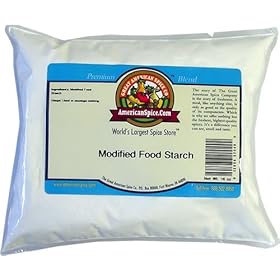 One of my projects is to appease one of my weaknesses. As I’ve probably mentioned before, “Gluttony” is my second-most-favorite deadly sin. If you’ve been listening to “Stir-Fried Random” (new episode coming shortly, I promise) and reading the blog recently, you can probably tell that among my large collection of “a peculiar fondess for [whatever]” attributes that I possess is one for “Cinnamon Bears“. While they’re not too bad as far as candy goes, they’re still not good for me. Plus, like any candy they can get to be kind of expensive. (Dear Amazon.com: The package plainly says “2/$100“. You’re selling these in groups of 12. Now, I only carried my calculation out to 3 significant figures, but I estimate that this should cost $6.00. Not “$6.85”. Plus $7.90 for shipping. $14.75 for $6.00 worth of convenience-store candy is just stupid.)
One of my projects is to appease one of my weaknesses. As I’ve probably mentioned before, “Gluttony” is my second-most-favorite deadly sin. If you’ve been listening to “Stir-Fried Random” (new episode coming shortly, I promise) and reading the blog recently, you can probably tell that among my large collection of “a peculiar fondess for [whatever]” attributes that I possess is one for “Cinnamon Bears“. While they’re not too bad as far as candy goes, they’re still not good for me. Plus, like any candy they can get to be kind of expensive. (Dear Amazon.com: The package plainly says “2/$100“. You’re selling these in groups of 12. Now, I only carried my calculation out to 3 significant figures, but I estimate that this should cost $6.00. Not “$6.85”. Plus $7.90 for shipping. $14.75 for $6.00 worth of convenience-store candy is just stupid.)
Anyway…I’ve gotten my grubby paws on a small bag of erythritol, which is effectively a calorie-free sugar alcohol produced from a regular sugar by a natural fermentation process. All I should need is one or more thickening agents and some oil of cassia and/or other flavors and I should be able to come up with a recipe for my own pig-out-all-I-want, even-better-than-mass-market cinnamon bears. Food is one of the few areas that I seem to have any natural artistic talent with, so I ought to be able to handle this.
 The trick is going to be getting the right texture. I’ve found recipes online that use gelatin or pectin. The store-bought product, though, uses “Modified Food Starch”. How exactly do they “modify” the food starch? I vaguely recalled that it was an acid-treatment process that partially breaks up the long glucose polymers, but I wasn’t sure. As any modern nerd would do, I decided to ask My Friend, The Internet.
The trick is going to be getting the right texture. I’ve found recipes online that use gelatin or pectin. The store-bought product, though, uses “Modified Food Starch”. How exactly do they “modify” the food starch? I vaguely recalled that it was an acid-treatment process that partially breaks up the long glucose polymers, but I wasn’t sure. As any modern nerd would do, I decided to ask My Friend, The Internet.
Most places seem to be vague about what exactly the “modification” is, but it became quickly obvious that there were multiple treatments that result in “Modified Food Starch”. Ah, but I was in luck! The Food and Drug Administration actually has a specific entry[1] in the Code of Federal Regulations, which can always be counted on to definitive. So, I went and looked at good old Title 21, Volume 3 of the Code of Federal Regulations and…WTF?!?!?
They list a bewildering array of chemical and enzymatic treatments that all get lumped into “Modified Food Starch” (or “Food Starch-modified” as they quaintly put it).
I guess my happy new box of “Corn Starch” will have to remain unmodified for the time being. At least until I can figure out how to produce my own ?-amylase [without spitting, that is]. I also have unflavored gelatin and pectin at my disposal here, so I’ll come up with something.
Anybody got a good reference on industrial food processes?…
[1] 21CFR172.892
Short answer: for what you are wanting, boil it with a little lemon juice / citric acid. Then bring it back to 7.0 or so with baking soda.
Long answer: depending on the ratios, temp, and timing you can get anything from a colloidal suspension of unmodified starch to a plastic hard enough to make small toys out of (recipes on the plastic end of the spectrum tend to involve glycerin or similar as a softener).
So try it and see what you get. I’d suggest getting a bunch of disposable cups and follow a protocol roughly as follows: do several midsized batches with varying citric acid / starch / water ratios, then pull out samples after various cooking times (t=0=start of boiling; before that I suspect not much will have happened). Neutralize each sample by putting it in a (pre-labeled) sample cup with an appropriate amount of NaHCO3 (predissolved in a minimum of water) & mixing immediately.
If non of these give you what you want you may want to try cooking after neutralization, but that makes it harder to cover the pre-neutralization parameter space.
— MarkusQ
Ah, thanks for the tips! I’m hoping to use a mix of pectin, gelatin, and starch for my final product. The goal here is to be able to more or less pig out on as much of whatever I come up with as I might want. The starch, of course, is a digestible carbohydrate (and now that you got me thinking about it – it looks like the sugar is less than half of the carbohydrate calories in Cinnamon Bears! Presumably the rest is the modified food starch, since there’s not much else…). I tend to agree with Foamy the Squirrel about “Atkins”, but if I can keep the level of starch down it’ll help keep the stuff minimally fattening. Pectin being a soluble fiber, I can use it for bulk. Gelatin technically has “calories” of course, being a low-quality protein, but for my casual “diet” (such as it is) purposes I’m allowing myself all the proteinaceous material I feel like eating.
I do actually have a bag of citric acid that I’ve recently rediscovered (I bought it quite some time ago and forgot) – I’ll have to give the experiments a try when I get a chance.
One advantage of modified starch over pectin / gelatin in my experience (limited to minor food hackery of this sort and a few attempts at DIY plastics and such) is that it doesn’t denature / go weird as easily. I’ve found that changes in water content, temp, or exposure to trace quantities of various enzymes (I’m guessing) can turn them into sludge over time while the tangled mass of amylopectin from (aka modified starch) retains it’s texture.
— MarkusQ